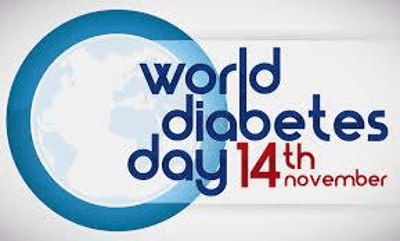
WHAT IS DIABETES MELLITUS?
It is a chronic condition (it lasts a lifetime) associated with abnormally high levels of sugar (glucose) in the blood.
It occurs either when the pancreas does not produce enough insulin or when the body cannot effectively use the insulin it produces. Insulin is a hormone that regulates blood sugar.
Hyperglycaemia, or raised blood sugar is a common effect of uncontrolled diabetes and over time leads to serious damage to many of the body’s system especially the nerves and blood vessels
WHAT ARE THE DIFFERENT TYPES OF DIABETES?
There are 2 major types called Type 1 & Type 2.
Type 1 is characterized by deficient insulin production and requires daily administration of insulin.
Symptoms include excessive excretion of urine, thirst, constant hunger, weight loss, vision changes and fatigue. These symptoms may occur suddenly.
Type 2 comprises 90% of people with diabetes resulting from the body’s ineffective use of insulin and is largely due to excess body weight and physical inactivity.
Symptoms may be similar to those of Type 1, but are often less marked as a result; the disease may be diagnosed several years after onset.
Other types are:
• Gestational diabetes which is hyperglycaemia with onset or first recognition during pregnancy.
• Secondary diabetes – refers to elevated blood sugar levels from another medical condition, certain medications such as prednisone and drugs used in treatment of HIV infection.
WHAT ARE THE RISK FACTORS?
• Anyone can develop diabetes but it is common in:
• Overweight/Obese people
• People who are physically inactive
• Blacks, Indians and Hispanics
• Older persons
• People with a family history of diabetes.
HOW CAN THE BURDEN OF DIABETES BE REDUCED OR AVOIDED?
Simple lifestyle measures have been shown to be effective in preventing or delaying the onset of Type 2 diabetes. To help prevent Type 2 diabetes and its complication, people should:
• Achieve and maintain healthy body weight
• Be physically active – at least 30minutes of regular, moderate – intensity activity daily.
• Eat a healthy diet of between three and five servings of fruits and vegetables a day and reduce sugar and saturated fats intake.
• Avoid tobacco use.
MANAGEMENT & TREATMENT OF DIABETES MELLITES
Early diagnosis can be done through relatively inexpensive blood testing.
Diabetes cannot be cured and treatment involves lowering blood glucose with diet, exercise and use of appropriate medications (insulin, oral medications).
Other interventions that are both cost saving and feasible include:
• Blood pressure control
• Foot care
• Screening for retinopathy (which causes blindness)
• Blood lipid control (to regulate cholesterol level)
• Screening for early signs of diabetes – related kidney disease.